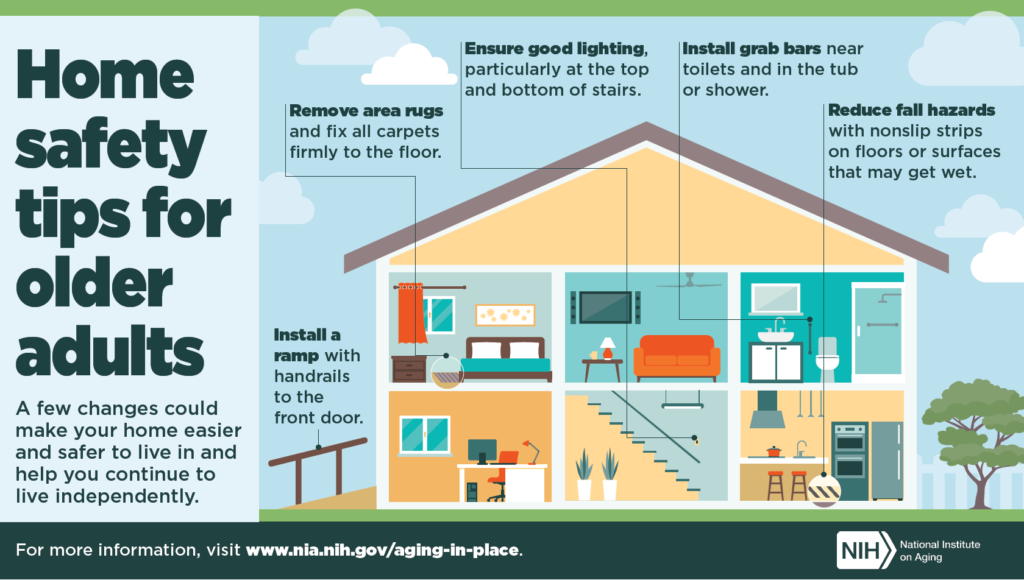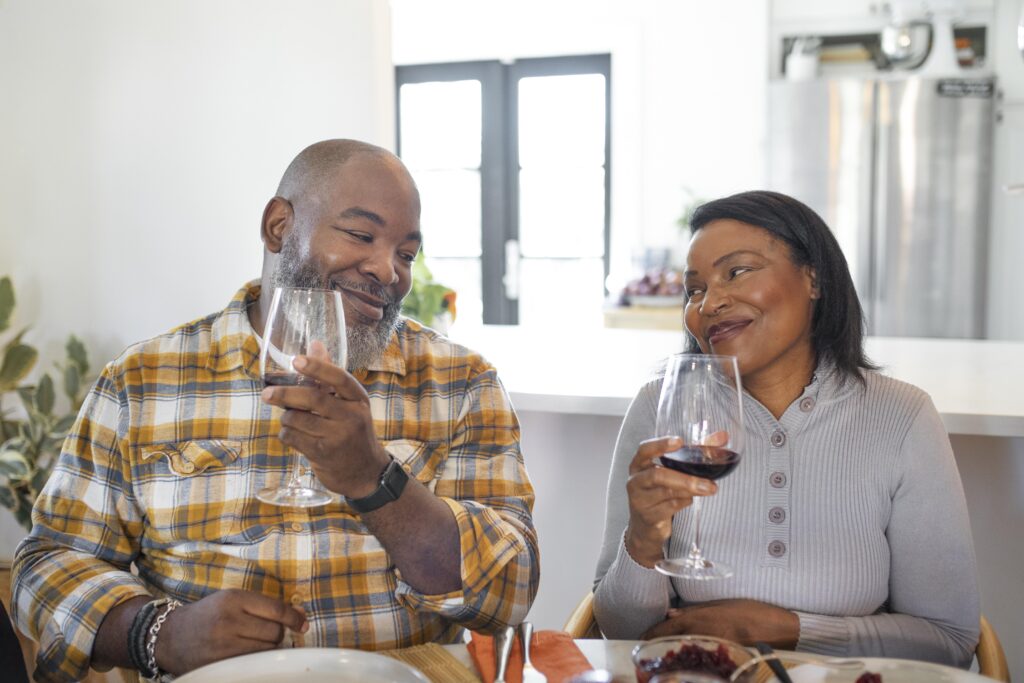As we age, ensuring a safe home environment becomes increasingly important. Simple modifications can significantly reduce the risk of accidents and make daily living more comfortable.
Here are five essential home safety tips for older adults that can enhance mobility, prevent falls, and promote overall well-being.

Image source: www.nia.nih.gov/aging-in-place.
Install a Ramp
For seniors with mobility issues, stairs can be a major obstacle. Installing a ramp is a practical solution that provides easy access to and from the house.
Ramps are particularly useful for those using wheelchairs, walkers, or scooters.
Benefits of Installing a Ramp
- Reduces the risk of falling on stairs.
- Facilitates the use of mobility aids.
- Provides easier access for emergency responders.
Considerations
- Ensure the ramp has a non-slip surface.
- Make sure the slope is gentle and meets ADA guidelines (a 1:12 slope is recommended).
- Add handrails for additional support.
For more information on ramp installation, visit the Americans with Disabilities Act (ADA) guidelines..
Remove Area Rugs
Area rugs might add aesthetic value to a home, but they are a common tripping hazard, especially for older adults. Removing them or securing them properly can prevent unnecessary falls.
Alternatives to Area Rugs:
- Use non-slip mats in high-risk areas like the bathroom and kitchen
- Install wall-to-wall carpeting with a low pile
- Consider hard flooring options like laminate or vinyl, which are easier to navigate with mobility aids
Safety Tips
- If rugs are essential, use double-sided tape to keep them in place
- Ensure edges are flat and not curling up
For more flooring safety tips, check out the Floor Safety Institute.
Ensure Good Lighting
Proper lighting is crucial in preventing falls and ensuring safety. Poor lighting can obscure obstacles and make it difficult to see clearly, especially at night.
Improving Home Lighting:
- Install bright, energy-efficient LED bulbs.
- Use nightlights in hallways, bathrooms, and bedrooms.
- Add motion-sensor lights in commonly used areas.
- Ensure light switches are easily accessible and consider installing rocker switches which are easier to use than traditional ones.
Outdoor Lighting:
- Illuminate pathways, stairs, and entryways.
- Consider solar-powered lights for an eco-friendly option.
For more lighting ideas, visit Energy.gov.
Read: The Link Between Cognitive Decline, Social Isolation, and Alzheimer’s Disease
Install Grab Bars
Grab bars provide crucial support in areas where slips and falls are more likely to occur, such as bathrooms and stairways.
Key Locations for Grab Bars:
- Beside the toilet.
- In the shower or bathtub.
- Along stairways.
Installation Tips:
- Ensure grab bars are securely anchored to the wall studs.
- Opt for bars with a textured surface for a better grip.
- Consider installing fold-down bars for smaller spaces.
For guidelines on proper installation, see Centers for Disease Control and Prevention (CDC).
Read: 4 Things To Know About Depression & Older Adults
Reduce Fall Hazards
Reducing clutter and organizing living spaces can significantly decrease the risk of falls.
Fall Prevention Tips
- Keep frequently used items within easy reach.
- Rearrange furniture to create clear, wide pathways.
- Use non-slip mats in the bathroom and kitchen.
- Store heavy items at waist level to avoid overreaching.
Additional Measures:
- Regularly check and repair loose floorboards or tiles.
- Ensure cords and wires are safely tucked away.
For a comprehensive guide on fall prevention, visit National Institute on Aging
Conclusion
Ensuring the safety of older adults at home is a vital step in maintaining their independence and quality of life.
By implementing these simple yet effective modifications—such as installing ramps and grab bars, removing area rugs, ensuring good lighting, and reducing fall hazards—you can create a safer living environment that minimizes risks and promotes well-being.
For more resources and tips on home safety, visit AARP.

